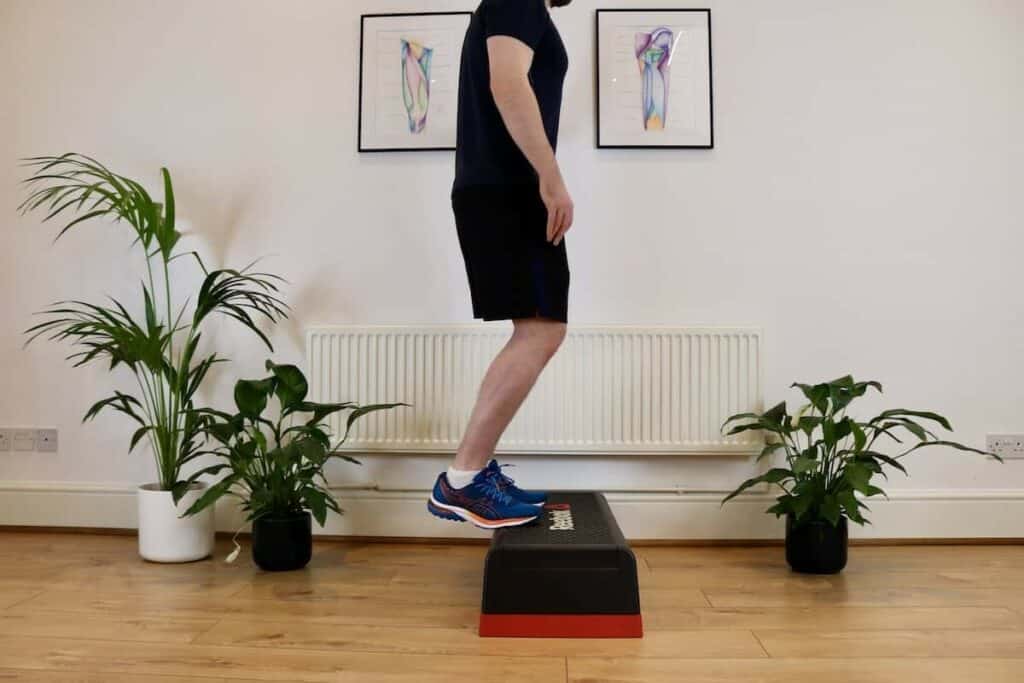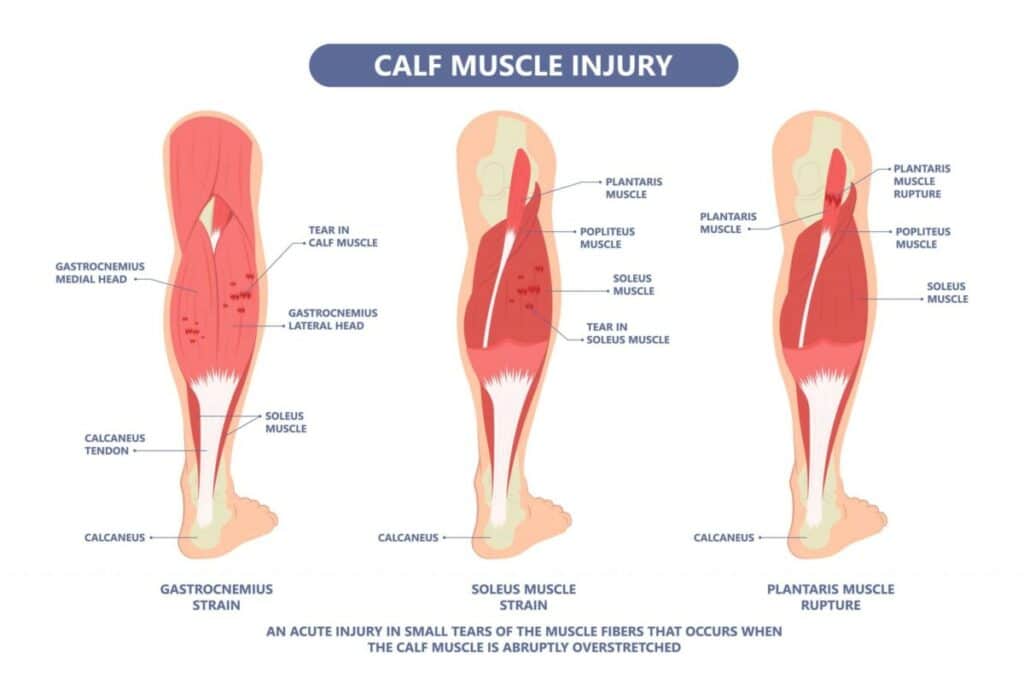Tight Calves Running
- Best Asics Shoes for Flat Feet - October 25, 2024
- Best Running Shoes for Flat Feet - October 22, 2024
- Posterior Tibial Tendonitis - October 21, 2024
The calf muscles work throughout your running stride, so they can quickly become overloaded and tight. There can be several reasons for this, and we will explain why you get tight calves running and how to ease your tight calves from running. Below are the 3 key reasons you can experience tight calves running.
Weak Calf Muscles

One of the main reasons runners experience tight calves is muscle weakness. When the calf muscles are not strong enough to handle the repeated load of running, they fatigue, tighten, and cause discomfort.
The calf consists of two primary muscles:
- Soleus – Works harder when the knee is bent
- Gastrocnemius – More active when the knee is straight
Both muscles stabilize the knee and ankle while also plantarflexing the foot (pushing off the ground).
The Role of Calf Strength in Running
Running places up to nine times your body weight through the calf and Achilles tendon with each step. If the muscles lack strength or endurance, they fatigue faster, leading to tightness, stiffness, and discomfort during or after a run.
How to Prevent Tight Calves While Running
- Strengthen your calves – Stronger Soleus and Gastrocnemius muscles are less likely to tighten
- Perform calf raises – Use a step or leg press machine to build endurance and power
- Train for endurance – Running is an endurance activity, so strengthening exercises should reflect that
Recommended Strength Routine
- 3 sets of 30 repetitions – Perform with both knees straight and knees bent
- Frequency: Three times per week
By improving calf strength and endurance, runners can reduce tightness, improve performance, and lower the risk of injury.
Poor Running Technique

How Running Technique Affects Calf Tightness
Your running technique plays a crucial role in how force is distributed through your calf muscles. One of the most significant factors is foot strike pattern, particularly when comparing forefoot running vs. heel striking.
- Forefoot running places a constant isometric contraction on the calf muscles, requiring greater strength and endurance to prevent tightness.
- Heel striking reduces the immediate load on the calf but increases impact forces elsewhere, such as the knee.
The Importance of Midstance Position
The peak middle stance position—when your full body weight is directly over a single leg—determines how much strain is placed on the calf muscles.
- Ideally, your ankle should be at a 90º angle between the foot and shin at midstance.
- Excess knee bend during this phase increases eccentric loading on the calf, leading to greater fatigue and tightness.
Techniques to Reduce Calf Strain While Running
To minimize calf fatigue and tightness, consider these adjustments:
- Increase cadence: Aim for a stride rate of 171-180 steps per minute to promote a more efficient running gait and reduce excessive strain on the Achilles tendon and calf muscles.
- Run with an upright posture: Avoid excessive forward lean, which can increase calf workload.
- Choose the right footwear: A high-drop running shoe (10mm or more) helps shift the load away from the calf, reducing the risk of tightness.
By optimizing your running technique and making small adjustments, you can significantly reduce calf tightness and improve running efficiency.
Muscle Tears

Soleus Muscle Tears: A Common Cause of Calf Tightness in Runners
The Soleus muscle is a deep, flat muscle within the calf complex, responsible for stabilizing the ankle and absorbing impact forces during running. Unlike the more superficial Gastrocnemius, the Soleus plays a key role in endurance-based activities and is particularly vulnerable to gradual overuse injuries.
How a Soleus Muscle Tear Presents
A Soleus muscle tear is often misdiagnosed as tight calves, as it develops gradually rather than from an acute injury. The most common pattern includes:
- Discomfort that progressively worsens during a run—often described as a tightening sensation.
- Pain that stops immediately after running, with no visible bruising or swelling.
- Pain during specific movements, such as a bent-knee stretch off a step or single-leg maximal hops.
Treatment and Recovery
Managing a Soleus muscle tear requires a combination of rest from impact activities and a progressive strengthening program. Key rehabilitation strategies include:
- Reducing high-impact activities (such as running) to allow healing.
- Strengthening exercises tailored to calf endurance and resilience.
- Gradual return to running, ensuring the muscle can tolerate load without recurring pain.
If you suspect a Soleus muscle tear, it is essential to consult a Physical Therapist for a proper diagnosis and an individualized treatment plan. Early intervention can help prevent chronic calf tightness and reduce the risk of re-injury.
_______________________________________________________________________
We are specialists in treating foot conditions such as calf muscle tears, and you can see one of our Foot and Ankle Specialists in our clinic in Fulham, South West London.
Related Articles
Best Exercises for Flat Feet – Best Shoes for Haglund’s – Foot Pain Chart
Feel Good, Move Well, Be Better
